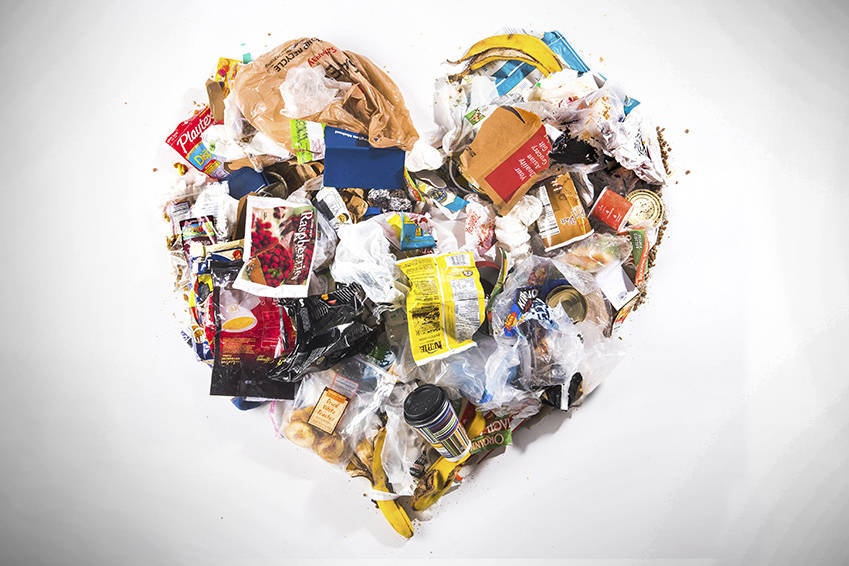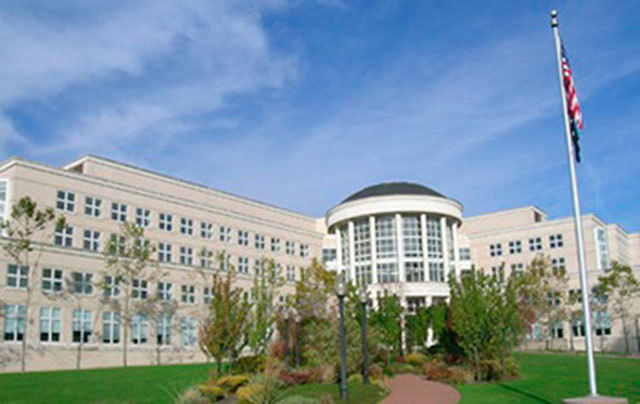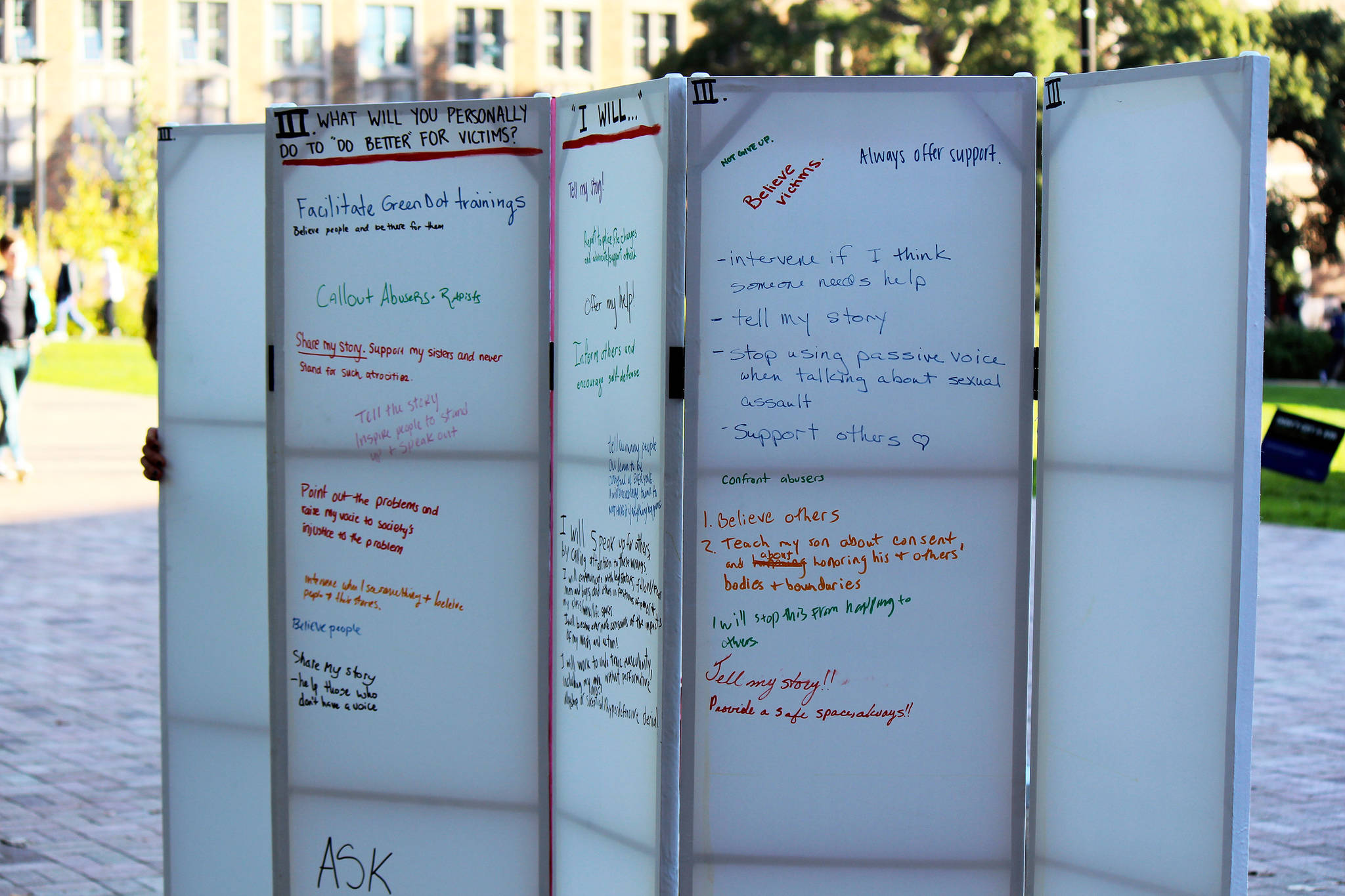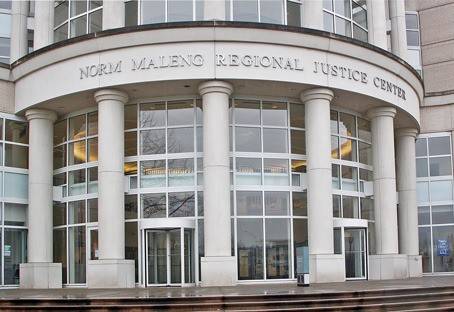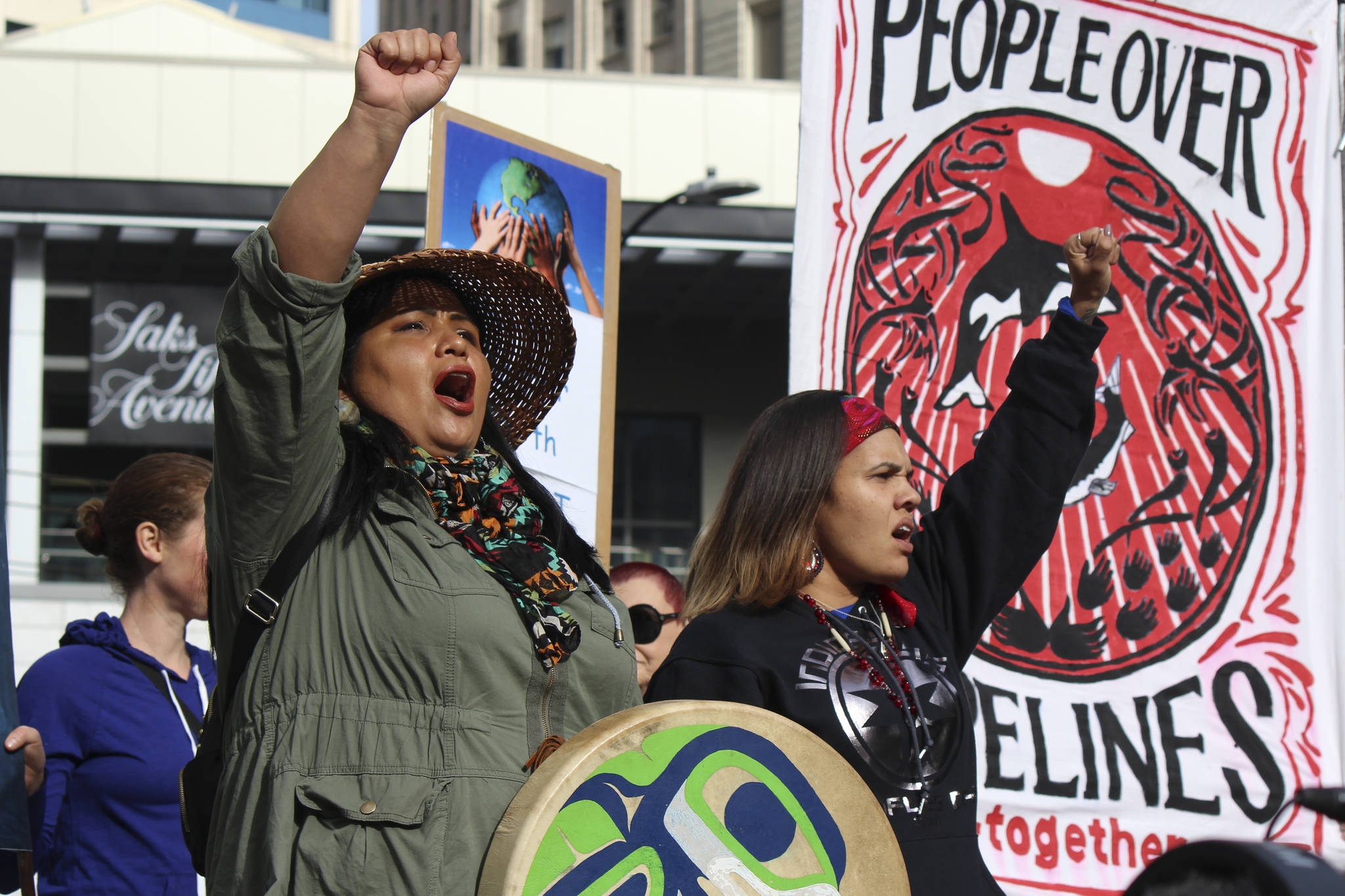Before that first trip to Europe in 2006, Kathy Lambert was not particularly interested in trash. “I knew nothing about solid waste or garbage—nor did I care,” the King County Councilmember says now. Her long and varied career, which includes 16 years as a public-school teacher, six years in the state legislature, and 16 years on the King County Council advocating for everything from cybersecurity to at-risk youth, did not include much by way of garbology. Her knowledge at the time: “It leaves on Monday.” After that: “I had no idea what happened to it.”
But then, in the mid-’00s, came rumblings that King County’s only landfill might fill with trash and have to shut down completely by 2012. As Lambert puts it, “Everybody freaked.” She began researching other options. On a tour led by Philipp Schmidt-Pathmann, a local waste-management specialist who grew up in Hamburg, Germany, she visited some of the most high-tech and state-of-the-art trash-incinerator facilities in Europe and spoke with some of the world’s leading engineers and scientists, as well as the German Green Party, on the matter. And she fell madly, hopelessly, tirelessly in love—an infatuation she has kept breathlessly alive for 10 years. “I left here Fred Flintstone,” she says now, her voice still full of a remarkably infectious wonder. “I came back Judy Jetson.”
The technology could not be more stunning, as she and many proponents will tell it: Trash incinerators—better known in industry parlance as “waste-to-energy” plants (WTE)—no longer just burn garbage, coughing toxic particulates into the atmosphere and earning them the terrible reputation they developed in the 1980s and ’90s. The technology has now evolved into a kind of futuristic marvel—burning the trash, yes, at some 1,800 degrees Celsius, but in a vacuum that captures the heat; converts it to electricity to power tens of thousands of homes; rescues the valuable heavy metals; blocks all toxic particulates and climate-warming gases from escaping; and turns the resulting ash into cement and filling for road beds. Poof: Hundreds of thousands of tons of reeking trash, converted as if by magic into useful, revenue-producing things. “It makes me sad that in a county that is supposed to be so green and so high-tech and so responsible, they completely have not gotten on board with this,” she says.
It seems fair to assume that most anyone who has ever had cause to discuss waste management with Kathy Lambert knows a thing or two about this sorrow—and her enthusiasm. She’s been hosting educational sessions and panels and symposia on WTE technology since she returned from her first European visit, including one in 2008, another in 2010, and twice more this January and February; she says she’s had a total of six public meetings and many more one-on-ones with Rotary clubs and chambers of commerce and other groups over the years. She cheekily describes the January 2017 symposium, which now lives in video form on her official web page, as “two hours, one minute, and five seconds of tantalizing information.” In 2006, she and former Seattle City Councilmember Richard Conlin penned an op-ed supporting WTE in the Seattle P-I (the headline: “Let’s put our garbage to work”). In 2013, she put WTE high on the list of her re-election campaign priorities, and when asked if she plans to do so again this fall, she responds with an emphatic, “Oh yeah! Absolutely.” Lambert says that her colleagues on the Council have teased her about this unique obsession—when she first set off to Europe, “people laughed at me”—and when she recently thanked County Executive Dow Constantine for promising that he would try to get a new WTE study underway, she claims he added, playfully, “Yes, making you happy is my job.”
Her crusade has been, you might say, fairly relentless. And it’s been kicked into high gear again, because at some point this year, King County will have to make a decision.
Right now, almost all of the trash from across the county, except Seattle’s, is trucked to the Cedar Hills Regional Landfill in Maple Valley. Although Cedar Hills’ eventual closure date keeps changing—current estimates now end its life around 2028—the county still has to have a next-steps plan underway long before then. Its Comprehensive Solid Waste Management Plan is many years overdue for an update, staffers say; though state law requires counties and cities to update their waste plans every six years, King County’s most recent, fully adopted plan passed in 2001. The updates since then—for a variety of logistical and bureaucratic reasons—have been drafts and piecemeal recommendations only, so the pressure is on: They really want to have a draft out later this year, with a completed, adopted plan in 2018 at the latest. That document must delineate the county’s position on what’s next for waste disposal, post-Cedar Hills.
There aren’t that many options. Cedar Hills’ life could be extended again, possibly, either by diverting large amounts of trash from being sent there in the first place, or by exacting new feats of waste engineering to squeeze more and more trash into less and less space. Alternatively, King County could start mimicking Seattle and ship its trash down a rail line to a landfill in eastern Washington or out of state. Seattle, which stopped sharing its waste-management system with King County in 1992, packs about 300,000 tons of trash per year into shipping containers that it sends via railroad, six days a week, to a landfill in eastern Oregon. Third option: King County could take a page from Hamburg, Germany, or West Palm Beach, Florida, or Marion County, Oregon—or Kathy Lambert—and build something that, as she and other WTE supporters insist, is cleaner, greener, more sustainable, and more technologically wondrous by far than even the most forward-looking, meticulously monitored landfill.
As she told her February 28 symposium audience, “I do not want to leave my grandchildren a Pamper mountain full of garbage.”
In 1988, when Seattle was still part of King County’s waste-management system, the County Council considered—briefly—building a trash incinerator. The resulting community backlash was so immediate and ferocious that it is now known, per a brief history of King County Solid Waste compiled by county staff, as the “Incinerator Controversy.” (Delightful newspaper headlines from the era include “Sparks fly over plan to burn garbage”; “Too hot: County Council to wait on incinerator”; “County Council cools ardor for trash burner”; and, because this is Seattle: “Leather-clad rockers join anti-garbage incinerator protest.”)
Incinerator technology has transformed dramatically since the late 1980s, as Lambert, Schmidt-Pathmann, and the German Green Party insist. The facilities now meet, and often exceed, federal environmental standards; the U.S. EPA currently classifies WTE as a renewable energy, and the technology has received some measure of support from the Sierra Club, the Nature Conservancy, and the Intergovernmental Panel on Climate Change. Still, the philosophy behind that late-’80s backlash—both the NIMBY resistance to building a potentially toxic facility, as well as the argument that we should invest in recycling programs instead of trash-burning ones—undergirds much of the local beliefs that persist to this day. The City of Seattle has been putting its foot down against the idea so firmly for the past three decades that it has specifically written that point of view into its Solid Waste Management Plan. It was a move perhaps intended, as one city staffer jokes, “to drive a stake into the heart of this vampire.”
Seattle will opt for landfilling and “not pursue or authorize direct combustion” of any solid waste, the plan says. The primary argument, all newfangled technology aside: Building an incinerator would require huge capital investment. As a result, it would require a minimum amount of garbage over time to help cover those costs, and thus “act as a disincentive to recycling. On the other hand, landfilling requires no daily minimum and less material disposal extends the life of the landfill.” While Seattle does ship its garbage hundreds of miles down a rail line, and is locked into a contract with the Arlington, Ore., facility until 2019, no minimum shipment amount is required. “The less we ship, the less we pay,” says Susan Fife-Ferris, Seattle’s solid-waste-planning director. Seattle now diverts approximately 58 percent of what it throws out to composting and recycling facilities, up from 28 percent at the time of the Incinerator Controversy, which puts the city leagues ahead of most others in the U.S. (the national average is still less than 35 percent). “We really want materials to be recycled and used at their highest use,” Fife-Ferris adds. “A highest use isn’t burning something. A highest use would be taking a piece of paper and turning it into another piece of paper; taking a piece of plastic and turning it into carpet, or a fleece vest. Not burning it and then ending its life.”
WTE proponents say that the technology doesn’t have to compete with recycling—that what it would replace is landfilling, which, like it or not, we still do. Landfills, it turns out, are finite: No matter how high-tech they have become, they are still fundamentally holes in the ground, and environmental regulations limit how deep and how high we can pack them with trash. And when they’re full, they don’t disappear: All landfills must be supervised and monitored for decades upon decades. While they “can be repurposed over time”—a model-airplane club uses the now-closed Hobart landfill, for instance—“they never go away,” says King County Solid Waste Division director Pat McLaughlin. “A landfill is going to be here forever.”
King County currently monitors seven permanently closed landfills, primarily testing for and mitigating the two environmental-health impacts most worth worrying about: methane (a greenhouse gas that, pound for pound, has 25 times the climate impact of carbon dioxide) and leachate (the toxic sludge that can seep through a garbage mountain into the water table). Maintenance and stabilization projects for these shuttered landfills cost King County millions of dollars every year.
Also, the recycling that city officials believe landfills can encourage, for all its merits, may not be as straightforward as it sounds. Lambert points out that at least some of what the region calls “recycling” means packing plastics onto barges and shipping them to China—a practice that has come under fire in the past few years, as Chinese plants have begun rejecting American shipments of recyclables because they were too contaminated to process cost-effectively. “It’s not honest to say that we’re recycling at whatever rate we’re saying this week if we have no idea where it has gone,” she says. She adds that tightly packed landfills often have a kind of mummifying effect on their trash—archaeologists have dug up readable newspapers from the 1930s—so if the county ever runs out of garbage to feed an incinerator with, it could always dig up the contents of Cedar Hills.
Seattle’s blessing is not required if King County wants to move forward with a WTE plant, of course. Still, Lambert says that she’s approached city officials time and again—if Seattle was interested, economies of scale could reduce capital costs for the county—and that they’ve told her, time and again, “We made our decision in the 1980s.” To which she retorts: “Are you still using Commodore 64 computers?” Seattle officials contend that they have revisited the idea since then; they’ve just come to the same conclusions.
Cost is a major concern, say both city and county officials; a new, high-tech WTE plant can have a price tag in the hundreds of millions. But the cost of maintaining closed landfills in perpetuity is necessarily part of the equation, too. “Money is not the problem,” Lambert insists. “The problem is a lot of people do not want to deal with people who do not understand this [technology] and think we’re polluting their air.” In Europe, she points out, most WTE facilities are downtown, so they can plug right into the electric grid; in Denmark, one WTE facility is nestled among half a dozen foreign embassies.
While many European incinerators are feats of eco-innovation, proponents say—as is the shiny new plant in West Palm Beach or the plant in Minnesota that warms a neighboring baseball field with the steam it generates—many are far less palatable to environmentalists. A controversial incinerator project in South Baltimore was shelved last spring, in part due to overwhelming opposition from local residents who argued that their neighborhood was already the most polluted in the state.
“Building new trash incinerators in the U.S. is basically impossible,” says Mike Ewall, founder and director of the national advocacy organization Energy Justice Network. “There has not been a single one built on a commercial scale on a new site for 22 years. Groups like ours and groups around the country stop them every time.” He adds that the term “waste-to-energy” is a public-relations term and nothing more. “Incinerators cannot turn waste into energy. They turn it into toxic ash and toxic air emissions.” (Lambert is indeed aware of the linguistic hurdles; as regards public perception, a better term than “burning,” she says, would probably be “thermally reclaiming.”) Many incinerators in the U.S. end up sending their ash to landfills anyway, Ewall says, which defeats the purpose of doing away with landfills; and, since the stuff is ground fine, the toxins can spread a lot more quickly and easily through local environments. He adds that an incinerator recently built in Ontario failed its air-quality tests during the startup phase. And even if modern facilities do figure out how to effectively protect the air, the cost of building in those protections can comprise half the cost of the entire facility, making incinerators, ultimately, the “most expensive and most polluting way to manage waste.”
Heather Trim, executive director of Zero Waste Washington and long a recycling and composting advocate, has less to say about the incineration technology itself, but remembers the controversy in the late ’80s and emphasizes Seattle’s point that it would compete directly with the region’s recycling efforts (McLaughlin says that some 70 percent of the material sent to Cedar Hills landfill, still, is compostable or recyclable). And there is, of course, always the big, bad question of “political viability,” she says. “I think it would be a very hard sell right now. This is something people have opposed for quite a long time.”
Where, indeed, would King County put it? Though Lambert’s visits to WTE plants have left her smitten (“I had no idea it would be that clean!” she says of her “favorite” plant, in Hamburg), convincing a skeptical community is no small feat.
“You have to site one of these facilities,” says McLaughlin, heavily. “Quite honestly, just with my short four-and-a-half years with the County, I’ve cut my teeth a few times on siting facilities. It’s not easy.” He points out that an incredible amount of time, effort, and expense is involved just to get neighbors on board with renovations to existing facilities—renovations that he claims would result in better environmental outcomes. Public feedback is important, of course. But still: “I think the realities of siting a facility cannot be underestimated.”
The Cedar Hills Regional Landfill, a 920-acre swath of rolling hills just south of Issaquah, ringed by thin stands of trees and overlooking snow-capped mountains in three directions, truly smells like garbage in only one spot: the top, also known as “Area 7.” More than 100 trailers carrying about 2,400 tons of garbage from 10 transfer stations and drop boxes across King County drive up here every day, tipping their slimy contents into a giant, rank, multihued pile. A massive yellow trash compactor drives back and forth over the lumpy stuff, squishing it down as densely as possible, as dozens and dozens of hungry bald eagles perch, swoop, and dig through it, their scavenging talons making swift work of whatever’s still edible among the mounds of plastic.
Daily close-ups of our national bird, it turns out, are one of the best-kept secrets of working at a landfill. No seagulls are in sight, according to Cedar Hills assistant operations manager Scott Barden, because of the eagles’ strictly enforced pecking order. Herds of elk and deer are commonplace, too.
The rest of the landfill looks, mostly, just like land; it is underneath the innocuous grass roof that all the hidden engineering takes place. Each layer of trash, separated by dirt and sealed tightly inside thick liners, is crisscrossed with a lattice of pipes that collect the leachate and suck the methane—sending the former to several lined ponds and then to the Renton wastewater-treatment plant, and the latter primarily to the landfill gas-to-energy plant on site, BioEnergy Washington (BEW). Since 2013, BEW has been scrubbing and selling the captured gases to Puget Sound Energy, creating enough electricity, King County says, to power more than 19,000 homes. The gas that is collected in the pipes but can’t be used is flared—a combustion process that zaps the methane but still releases carbon dioxide and other gases. Cedar Hills staff measure the gas and test the groundwater every day of the year using vertical wells and gas probes inside the landfill and around the periphery of the site; the landfill is regulated by multiple agencies, and staff say they strive to exceed the requirements whenever possible.
“It’s not your father’s landfill,” McLaughlin explains. Before he started in his role, even he “didn’t realize there’s so much engineering and technology in a landfill.” And, across the U.S, “mostly, there isn’t. King County has been a leader in this area.” Although WTE proponents say that the amount of energy that landfill gas-to-energy operations collect is far less than that of WTE plants, waste is being turned to energy here, too. In 2015, Cedar Hills generated about 10,000 cubic feet per minute of gas from decomposing organic material, and McLaughlin says the landfill-gas system captures 90 percent of the methane the garbage creates.
Cedar Hills is nothing to sneeze at. But even McLaughlin concedes that landfilling has its downsides. It “raises concerns when you’re trying to dig deep holes in the earth,” he says. “Even when you do advanced landfilling, groundwater is always a concern.”
Or, as Schmidt-Pathmann puts it, bluntly: “All landfills leak. Everybody knows that.” A managing partner at Neomer, a environmental research and consultancy firm, he says he is a researcher and a scientist, not a WTE promoter; but the data consistently show that when it comes to leaks, emissions, public safety, and even economics, WTEs tend to win out. “Landfills are black boxes,” he says. “They’ll be with us for millennia.” And if they leak, “we might not find out until it’s already in the ground water and it’s too late then because the leachate is so toxic.” Some studies show that landfills release more dioxins—the potentially cancerous byproducts of combustion—than WTE plants do, because subterranean landfill fires are fairly common; according to the U.S. Fire Administration, some 8,300 fires happen in U.S. landfills every year. Schmidt-Pathmann also emphasizes that, according to a whole bunch of research, it is actually impossible for any landfill, no matter how high-tech, to capture 90 percent of its methane on any consistent basis. WTE plants, by contrast, generate no methane, he says, and produce 10 times the energy that landfill gas-to-energy processes do. One EPA study found that overall, WTE plants outcompete landfills in terms of greenhouse-gas emissions, local pollution, and energy production.
Schmidt-Pathmann and others also repeatedly point to European waste-management models that still prioritize recycling. Notably, many communities with high-tech WTE plants have been among the global leaders in terms of environmental sustainability. Germany recycles 66 percent of everything it throws away; Marion County, Ore., recycles nearly 60 percent (beating Seattle just slightly). Sweden, which created a system that relied on burning trash to generate heat for people’s homes, now has begun importing garbage from other countries because it’s been recycling so much (Schmidt-Pathmann sees this as cause for celebration; Ewall believes this shows that Europe “has overbuilt incinerators; they are regretting that now”). Incinerators can also end up recovering some metals that may otherwise have languished underground for millennia. “You wouldn’t take your belt apart to recycle the buckle,” says Paul Hauck, an environmental engineer and WTE expert from Florida. There are “hidden treasures in that pile of ash.”
And despite its best efforts, accidents do happen at Cedar Hills. In December 2013, for example, a gas pipeline broke and sickened some Cedar Hills neighbors enough to keep them out of their homes for months. “The event was a game-changer,” one local resident wrote in an e-mail to King County at the time. “While this break might seem minor in the grand scheme of things, it was, by comparison, a very significant event for those neighbors who, without warning or knowledge of the cause, became sick in their own homes, and has made us all realize how truly vulnerable we are living in proximity to the landfill.”
Lambert says two other Washington cities are now seriously considering building high-tech WTE plants (though neither have made their plans public). Lambert is not at all happy about this. “We’re not on the cutting edge of technology anymore,” she laments. She will attend ribbon cuttings for other plants, “and probably cry all the way home.”
The whole debate, it seems, has become something of a dumpster fire.
Both sides would like us all to use less, waste less, produce less. But in the same breath, both claim their technology is the lesser evil—and that the opposing technology is being unfairly pushed by business interests. Landfills in the United States are a multibillion-dollar industry with powerful lobbyists, say WTE promoters; the companies behind WTE plants are worth billions, too, with slick and powerful marketing teams, say detractors. Lambert calls WTE plants “almost a miracle.” Others have called them “really the devil.”
At the end of the day, “It’s not a question of technology for us,” McLaughlin says, speaking for the county’s Solid Waste Division. “There are regions in our country and of course around the world that have demonstrated that these technologies can work.” The question is, rather, whether an incinerator would be the best option for King County. In West Palm Beach, for instance, home to the snazziest incinerators in the U.S., landfilling isn’t really possible; they’re too close to the soupy wetlands of the Everglades. Or, in places that don’t have a good source of renewable energy—as Washington does—maximizing garbage’s potential to produce electricity might seem more attractive.
Lambert maintains her distaste for landfills: their long, untenable lives, their potential to leak and leach, their comparability to the world of Fred Flintstone. The energy produced from waste-to-energy is, to her, “the frosting on the cake. It’s the cake I’m really concerned about. It’s, how do we get rid of our garbage?”
At some point this year, King County will have to figure that out. And no matter the outcome, we know what Kathy Lambert will have to say about it.
“I’ve been aware and have appreciated Councilmember Lambert’s enthusiasm for our business,” McLaughlin says, in the gentle, understated manner you’d expect from a public official. But the grin in his voice is audible. “Not everyone gets so excited about solid waste.”
sbernard@seattleweekly.com
